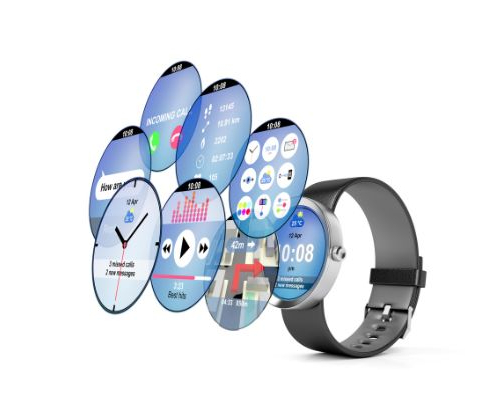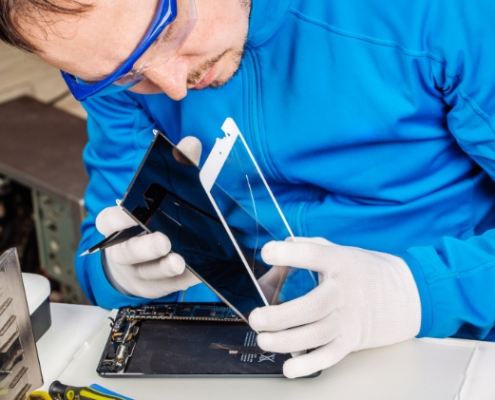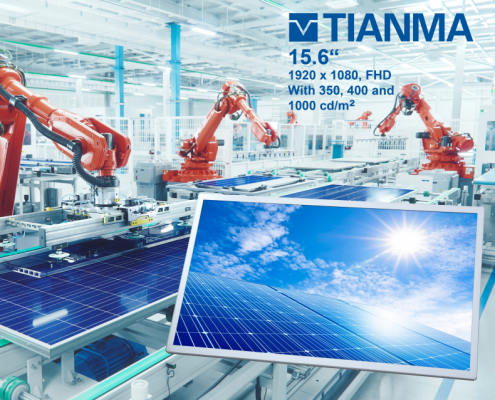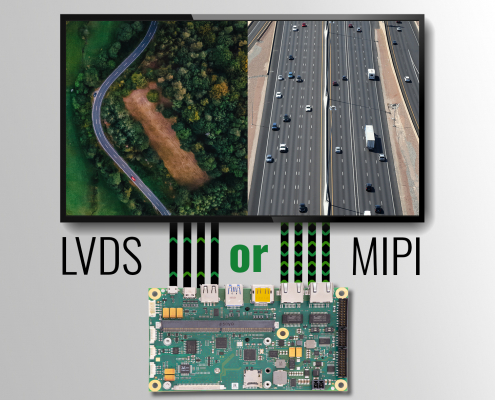Posts

Is this a true revolution in visual interfaces?
In a world where so many things are declared ‘revolutionary’, we try to exercise caution. But the combination of Ultra-Low Power TFT (Thin-Film Transistor) and Projected Capacitive Touch (PCT™) has opened up new possibilities for energy-efficient human-machine interfaces (HMIs). To us, it feels like the word definitely qualifies here, but we should probably take the opportunity to explain why, how these technologies work, their importance in the market and their advantages over ePaper displays.

Overwhelmed by choice? Take the SimplePlus route.
Are you feeling lost? That you simply don’t have enough hours in the day to spend hunting for the perfect display model? And then there’s the challenge of finding the right partner to help you with your visualization or HMI. Sheesh. It shouldn’t be this hard, right?

P is for ‘performance’: the new 15.6” displays from Tianma
Are you looking for a display that’s high-performance, powerful and prepared for any predicament? We’re always excited to be adding a new range from Tianma to our portfolio, but this one is so good it’s preposterous.

Glass guardians: display technology’s transparent armor
We have it in front of our faces every day, but only pay it any attention if it breaks. A layer of transparent coverglass sits over all the display panels that we use every day – in smartphones and tablets, televisions and monitors – and is essential in guarding the delicate electronics underneath, while also enhancing the quality of the display.

AMOLED: The luxe display that’s not for everyone
Ultra thin and ultra light, with outstanding optical performance, Active Matrix OLED displays have been a staple technology for smartphones and smaller consumer applications since around 2009. Happily, these small, powerful displays have recently grown in size, opening up opportunities for their use beyond handheld applications.

Seek out your ‘phygital’ with object recognition over PCAP
When you want people to interact differently with your touchscreen, what do you do? For example, you might want to bring the benefits of a product to life using an interactive table, where different aspects of the user experience are displayed as you move it around the surface. Or perhaps you have a touch display that would be more user friendly with a ‘dial’ function? Not easy to achieve with just fingers. How do you bring the physical and digital together in an easy and fun way?

Change the way you source displays with SimplePlus
Four whole months. Imagine what you could achieve in this time, while you waited, patiently for your touch displays to arrive. In the past, this was normal. For a simple display stack with generic coverglass and display drivers, an engineer could expect to a sixteen-week lead time. Sometimes more.

Wireless PCAP Technology: efficiency comes cable free.
Cables. We expect, like us, you have a love/hate relationship with them. On the one hand, for most applications when a TFT is connected to a touch, the complete Stack is connected over a short cable to a board. And that works just fine. After all, for this kind of application, a wireless PCAP makes no sense.

Bringing clarity to the world of MIPI and LVDS
Where displays are concerned, plenty of acronyms fly around. MIPI is one, LVDS and RGB/TTL are some others. You’d expect all three to be completely different, but life is never that precise, is it? For example, MIPI displays also use LVDS standards and as puzzling as that might sound, there are actually some fairly sound reasons for it.

New! 3.5” QVGA display for indoor applications
Our partners at Tianma have just released a thinner, smaller, lower cost QVGA display, ideal for the industrial market, HVAC systems or anywhere that requires a smaller HMI.

